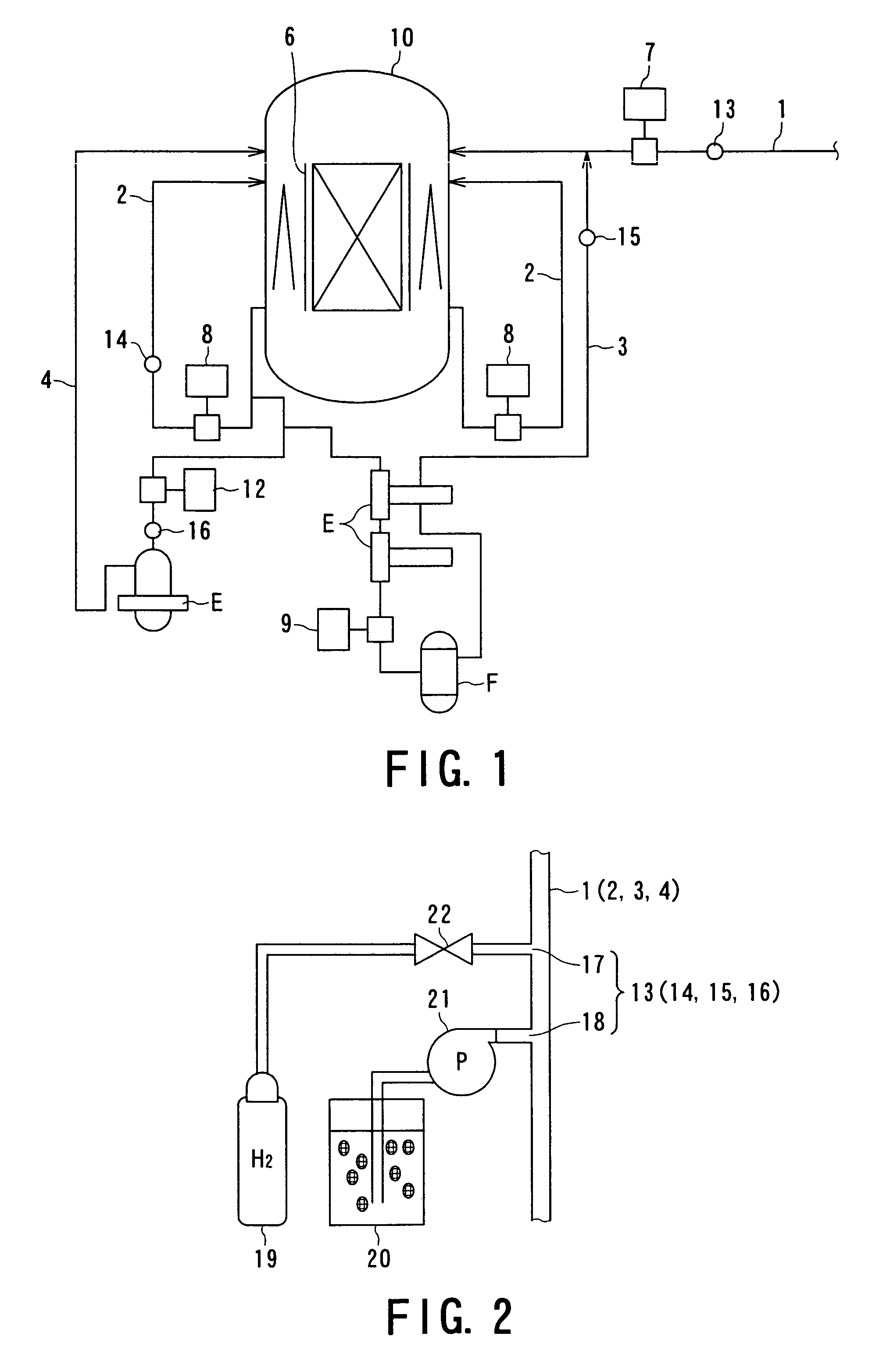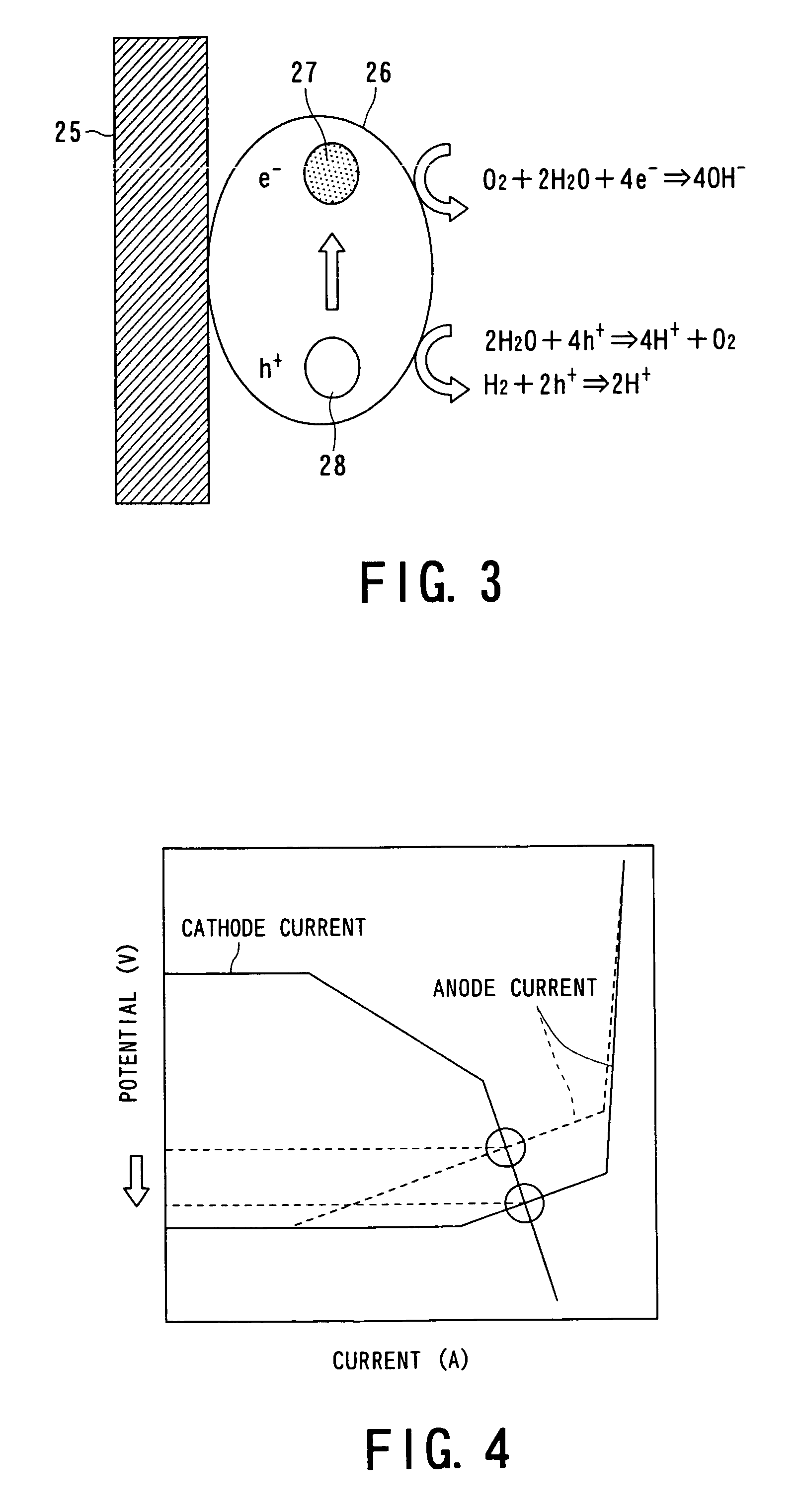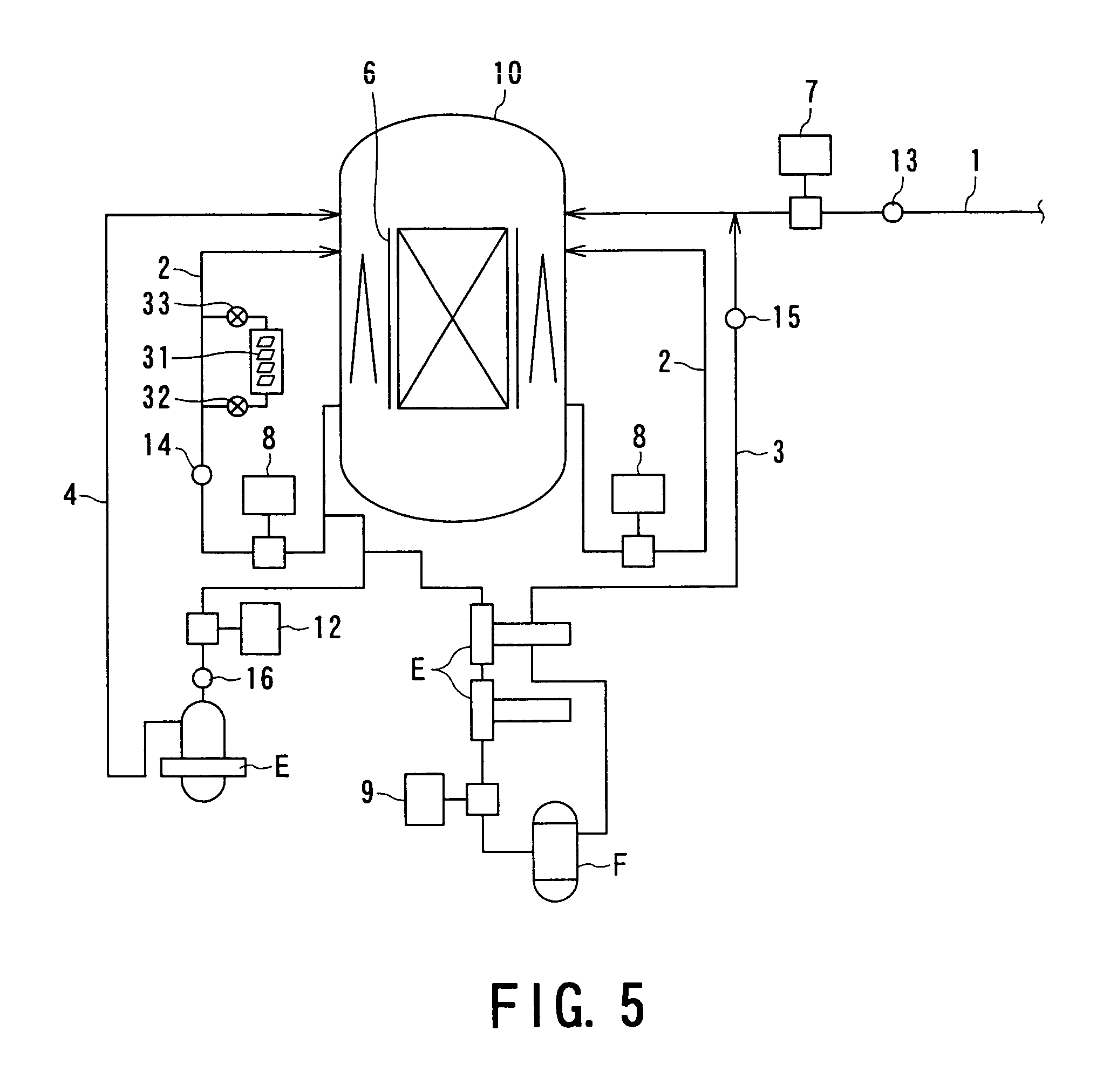Method of reducing corrosion of nuclear reactor structural material
a technology of structural material and nuclear reactor, which is applied in the direction of nuclear elements, greenhouse gas reduction, nuclear engineering, etc., can solve the problems of increased dose rate of turbine system, fuel material corrosion, stress corrosion cracking, etc., to reduce the corrosion of nuclear reactor structural material, suppress the flow of radioactivity, and prevent stress corrosion cracking
- Summary
- Abstract
- Description
- Claims
- Application Information
AI Technical Summary
Benefits of technology
Problems solved by technology
Method used
Image
Examples
first embodiment
[0053]A first embodiment of the method of reducing corrosion of a material constituting a nuclear reactor structure (which may be called hereunder “nuclear reactor structural material”) according to the present invention will be first described with reference to FIGS. 1 to 4.
[0054]FIG. 1 shows a circulating system of reactor water in a nuclear power plant. This reactor water circulating system includes a reactor pressure vessel 10, a feed water system piping 1, a primary loop recirculation (PLR) system piping 2, a reactor water clean-up (RWCU) system piping 3, and a residual heat removal (RHR) system piping 4. Examples of a nuclear reactor structural material forming the reactor pressure vessel 10 include materials of a shroud 6 shown in FIG. 1, a core support plate, and a grid plate. The method of reducing corrosion of a nuclear reactor structural material of the present invention can be applied to such materials.
[0055]A feed water pump 7 is disposed in the feed water system piping...
second embodiment
[0064]A second embodiment of the present invention will be described hereunder with reference to FIGS. 5 to 10.
[0065]FIG. 5 shows a circulating system of cooling water in a nuclear power plant. In this circulating system, equipment for setting test pieces for sampling is connected to the circulating system shown in FIG. 1. In FIG. 5, the same components as those in FIG. 1 have the same reference numerals. The description of the structure composed of the same components is omitted herein.
[0066]Referring to FIG. 5, test pieces 31 for monitoring the adhesion amount are disposed in a branch line formed in the vicinity of the injection point 14 of the primary loop recirculation (PLR) system pipe 2. Valves 32 and 33 (e.g., stop valves), which can isolate the test pieces 31 from the circulating system during sampling, are disposed at the upstream and the downstream of the branch line including the test pieces 31.
[0067]The adhesion amount of the titanium oxide to the structural material is ...
PUM
| Property | Measurement | Unit |
|---|---|---|
| electrochemical corrosion potential | aaaaa | aaaaa |
| corrosion potential | aaaaa | aaaaa |
| molar ratio | aaaaa | aaaaa |
Abstract
Description
Claims
Application Information
 Login to View More
Login to View More - R&D
- Intellectual Property
- Life Sciences
- Materials
- Tech Scout
- Unparalleled Data Quality
- Higher Quality Content
- 60% Fewer Hallucinations
Browse by: Latest US Patents, China's latest patents, Technical Efficacy Thesaurus, Application Domain, Technology Topic, Popular Technical Reports.
© 2025 PatSnap. All rights reserved.Legal|Privacy policy|Modern Slavery Act Transparency Statement|Sitemap|About US| Contact US: help@patsnap.com



